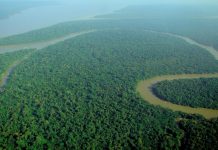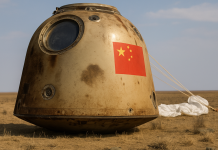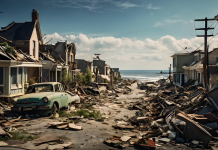Archaeologists have uncovered a vast Maya city hidden for centuries beneath the jungles of southeastern Mexico. Known as Valeriana, this ancient urban center is located in the state of Campeche and was revealed using LiDAR technology, a laser-based mapping technique capable of detecting structures buried under dense vegetation. The discovery showcases the Maya civilization’s architectural prowess and intricate urban planning, offering new insights into a complex society that thrived over a thousand years ago.
Valeriana, named after a nearby lagoon, was likely a major urban center during the Maya Classic period, estimated to have supported a population of 30,000 to 50,000 at its peak between 750 and 850 AD. The site covers approximately 16 square kilometers and features monumental structures, including pyramids, plazas, causeways, and a ball court. Researchers believe Valeriana was second in density only to Calakmul, a renowned Maya city located around 100 kilometers away. With two main architectural centers connected by dense residential zones, the site displays all the hallmarks of a Maya political capital.
The discovery was an unexpected breakthrough. Luke Auld-Thomas, a PhD candidate at Tulane University, found the data for Valeriana while browsing environmental studies online. Using a LiDAR survey originally conducted by a Mexican organization in 2013 for environmental monitoring, Auld-Thomas identified architectural patterns that others had overlooked. “I was on something like page 16 of Google search,” he noted, underscoring the serendipitous nature of the find.
LiDAR technology has transformed archaeology in regions like the Maya Lowlands, where thick vegetation often conceals ancient cities. By sending thousands of laser pulses from an aircraft, LiDAR can create detailed topographical maps that reveal hidden structures. In recent years, this technology has mapped more terrain in a decade than traditional fieldwork could have achieved in a century. The discovery of Valeriana is part of a broader trend revealing the extent of Maya urbanism across southeastern Mexico, Guatemala, and Belize.
Valeriana’s layout illustrates the Maya’s advanced urban planning and resource management. The city includes a reservoir, evidence of water management techniques critical for supporting large populations in a challenging environment. Scholars suggest that the Maya’s densely populated urban centers may have become vulnerable due to climate fluctuations. Prolonged droughts, coupled with limited resources, could have contributed to the decline and eventual abandonment of cities like Valeriana.
The scale and sophistication of Valeriana challenge outdated assumptions that tropical regions were unsuitable for advanced civilizations. As Professor Marcello Canuto, a co-author of the study, explains, the Maya developed vibrant and complex urban centers, refuting the Western notion that the Tropics were inhospitable to civilization. The dense network of Maya settlements indicates that much of the region once thrived with human activity, contrary to its present-day uninhabited appearance.
Beyond historical curiosity, Valeriana’s discovery holds modern relevance. The Maya civilization’s solutions for managing population density and environmental stress offer potential lessons for today’s urban planners grappling with sustainable development. Auld-Thomas notes that the Maya created cities that were sprawling agricultural landscapes and hyper-dense settlements, demonstrating diverse approaches to urban living that could inspire sustainable practices in the face of rapid global population growth.
Despite the excitement surrounding LiDAR’s contributions to Maya archaeology, the influx of data presents a challenge. “One of the downsides of discovering lots of new Maya cities in the era of LiDAR is that there are more of them than we can ever hope to study,” Auld-Thomas remarked. With so many hidden sites coming to light, archaeologists must prioritize resources to deepen our understanding of ancient Maya society and its legacy.
The findings on Valeriana and other recently identified Maya sites suggest that the story of this civilization is far from fully written. As technology continues to reveal new sites, the mysteries of the ancient Maya and their achievements remain a powerful reminder of the resilience and ingenuity that shaped their world.






